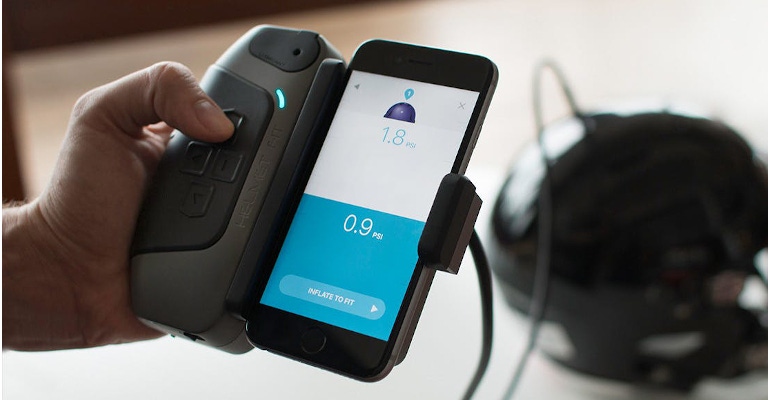It’s time to integrate the design of both physical and digital experiences.

I have two questions for you.
The first question—Have you ever struggled to connect to a wireless device with your phone? I bet you have. It’s not unusual to come across a technology-enabled product interaction that simply does not work the way you think it should.
The second question—Do you think your customers have had this experience with a product you’ve designed? (Gulp.)
We’re all guilty of it, and it hurts our businesses. An unintuitive product experience causes frustration and if not corrected can negatively impact brand loyalty over time.
Despite the fact designers have been developing physical devices with digital experiences for more than a decade now, it makes sense why this still happens.
Digital experience design is a relatively new discipline, all things considered. With the number of connected devices exploding, it is no surprise that product development teams are playing a bit of catch up.
Companies are still experimenting with the best ways to integrate digital experience design. They assume it’s a function of software engineering, which makes it challenging to design a cohesive user experience.
Ultimately, digital-physical products tend to focus on what the technology can deliver rather than what the user really needs. These products provide functional, but ineffective digital experiences.
We see it all the time in our product innovation firm. Here’s what we’ve learned doesn’t work and what does.
Why Today’s Digital-Physical Process Does Not Work
Across the industry, the approach to digital product development is still heavily influenced by the hardware development process.
The work is siloed, especially in larger organizations. Physical and digital experiences are usually the responsibility of different functions and different teams, and they are rarely designed in concert with one another. They require different skillsets and expertise that tend to be embedded in separate parts of the company.
Integrating these functions is a step in the right direction, but there are still obstacles. The product development processes and even vocabulary and cultures are different enough among industrial designers, interaction designers, and software developers that effective communication between teams is often very challenging. Consider adding the confusion associated with how to define digital user experience by calling it user interface design, interaction design, or user experience design, and you are in for a treat.
Timing for Orchestrating Between Digital and Physical Workflows Is Difficult
There’s a disconnect between the development schedules of hardware and software.
The timeline for hardware is a function of long lead-time elements of product development. Tooling, for example, requires hardware design to be finalized long before the product is introduced to the marketplace. Industrial designers responsible for the physical design and physical interaction have their design figured out very early in the process before the design can be moved through engineering and released for production.
The timeline for software, on the other hand, has more flexibility. Digital elements can be iterated and improved upon without the constraint of tooling. It is not unusual for the digital experience team to delay completing their design tasks until later, after the industrial designers have completed their part.
The disconnect between development schedules can lead to a break down in the connection between a product’s physical experience and its digital experience.
Designing Seamless Digital-Physical Experiences Requires a New Process
We’ve experimented with various digital-physical workflows on behalf of our clients for more than a decade now, and here’s what we have learned works.
1. User input gathered by both digital- and physical-focused teams.
User input must be gathered by designers from both digital and physical-focused teams. The digital and physical experience must be rooted in user input.
Then the digital and physical designers come together to design a solution that makes sense irrespective of how it will get accomplished and whether the solution will be physical, digital, or a mix of the two.
This is a critical element of designing effective user experiences.
2. Workflow mapping must take digital- and physical-interactions into account.
The most effective and seamless product interaction happens when the user effortlessly transitions between physical and digital interactions, and that requires carefully crafting and designing those transitions.
One of the tools we have seen used effectively is called a digital-physical workflow map. A digital-physical workflow is the equivalent of a product interaction journey map. It combines physical workflow mapping with wireframe mapping and visualizes them as two separate swim lanes connected over time.
As we adopted this tool, we were amazed to discover how helpful it was in highlighting areas of greatest interest to the user and enabling our designers to solve critical interaction elements effectively.
How to Create a Digital-Physical Workflow Map
First map the product’s physical interaction along a horizontal swim lane. Focus on the human interactions—the physical tasks and the focused user steps.
Then map the digital interactions below or above the physical interactions. The digital interactions are focused on user inputs, system feedback, and overall system outputs.
As you map these swim lanes, you will see the key points in the user journey at which they are switching between a physical and digital interaction.
These represent key areas where you can create a unique and cohesive experience.
Other Benefits of a Digital-Physical Workflow Map
The digital-physical workflow map is a highly visual and highly comprehensive way to document complex interactions in a holistic manner and help control design intent along the way.
This type of tool also helps establish the design vision for the product and communicate vocabulary between different design teams and developers.
Even as the team make-up evolves, new members of the team can effectively ramp up and understand the product interaction vision defined by this effective tool.
Combining Structure and Process for Effective User Experiences
It’s been our experience that the companies that are leaders in user experience design have recognized the need to bring designers of different background together structurally and by process.
Physical and digital designers at the leading firms are working alongside each other and finding tools like the digital-physical workflow mapping solution to establish a common language and a common understanding with which to provide the best experience possible.
About the Author(s)
You May Also Like





